CRUSADER
Gold Member
Sometimes your a victim of circumstances....
This field was not on the radar, until the the Govt Restrictions dictated that exercise should by done locally, so we looked around & found the closest field just 1 mile away. It should have been planted earlier but the wet conditions pushed it back, & the farmer wanted us on the recently drilled Winter Beans to keep the birds off. Win/Win.
We were last on this field in 2016 & the finds are very spread out & random. (no hotspots, no sites) Therefore, we deployed the very long gridding technique & went the whole width of the field, from the bottom up. With these 3 hunts of just over 15 hrs we still haven't done 10% of the whole field.
14 Scrappies (Roman coins)
Buttons - Livery, Military, 17th C, 2 Tudor
Silver Cuff-link
Victorian Gold plated thingy
2 17th C Spur Buckles
17th C Lead Cap for a Powder Flask
Poor condition Medieval Horse Harness Pendant
Bit of a 6th C Saxon Brooch
Tudor Strap-end
16-17th C Knife Terminal (hammer head style)
2 17th C Leather Mounts
Ancient Bronze Bracelet Bit?
Lead Tokens
4 Hammered - Philip & Mary Groat, Unknown Folded over Penny, Charles I Penny, Charles I Halfpenny with Rose on either side.
Very Rare Tasciovanus Stag Silver Unit circa 20BC-10AD - I found this type once before in 1999. Here is a better example:
https://www.ebay.co.uk/itm/Catuvell...vanus-Stag-Type-Ex-Rare-HHC4248-/324041698772
The first recorded example was in 1984, & when I found mine in 1999 it was the 10th Recorded example. Because it was then unpublished/unlisted, I had to travel to Oxford to get it IDed/Recorded. Since then there has now been a total of 20 Recorded. It was published in the 2010 ABC book & classified as Extremely Rare. You can find one on ebay with that description but I don't like to over egg things so have gone with Very Rare.
This field was not on the radar, until the the Govt Restrictions dictated that exercise should by done locally, so we looked around & found the closest field just 1 mile away. It should have been planted earlier but the wet conditions pushed it back, & the farmer wanted us on the recently drilled Winter Beans to keep the birds off. Win/Win.
We were last on this field in 2016 & the finds are very spread out & random. (no hotspots, no sites) Therefore, we deployed the very long gridding technique & went the whole width of the field, from the bottom up. With these 3 hunts of just over 15 hrs we still haven't done 10% of the whole field.
14 Scrappies (Roman coins)
Buttons - Livery, Military, 17th C, 2 Tudor
Silver Cuff-link
Victorian Gold plated thingy
2 17th C Spur Buckles
17th C Lead Cap for a Powder Flask
Poor condition Medieval Horse Harness Pendant
Bit of a 6th C Saxon Brooch
Tudor Strap-end
16-17th C Knife Terminal (hammer head style)
2 17th C Leather Mounts
Ancient Bronze Bracelet Bit?
Lead Tokens
4 Hammered - Philip & Mary Groat, Unknown Folded over Penny, Charles I Penny, Charles I Halfpenny with Rose on either side.
Very Rare Tasciovanus Stag Silver Unit circa 20BC-10AD - I found this type once before in 1999. Here is a better example:
https://www.ebay.co.uk/itm/Catuvell...vanus-Stag-Type-Ex-Rare-HHC4248-/324041698772
The first recorded example was in 1984, & when I found mine in 1999 it was the 10th Recorded example. Because it was then unpublished/unlisted, I had to travel to Oxford to get it IDed/Recorded. Since then there has now been a total of 20 Recorded. It was published in the 2010 ABC book & classified as Extremely Rare. You can find one on ebay with that description but I don't like to over egg things so have gone with Very Rare.
Attachments
-
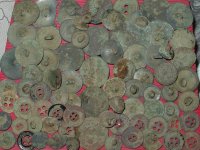 1.JPG223.7 KB · Views: 60
1.JPG223.7 KB · Views: 60 -
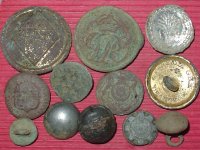 2.JPG147 KB · Views: 67
2.JPG147 KB · Views: 67 -
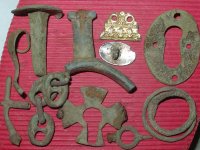 3.JPG209.6 KB · Views: 63
3.JPG209.6 KB · Views: 63 -
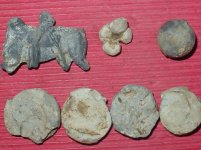 4.JPG136.1 KB · Views: 54
4.JPG136.1 KB · Views: 54 -
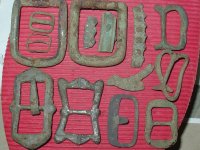 5.JPG225.2 KB · Views: 49
5.JPG225.2 KB · Views: 49 -
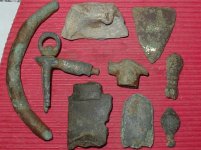 6.JPG136.9 KB · Views: 49
6.JPG136.9 KB · Views: 49 -
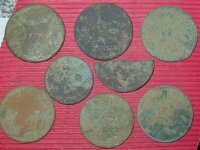 7.JPG181.6 KB · Views: 52
7.JPG181.6 KB · Views: 52 -
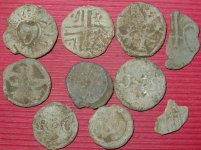 8.JPG165.1 KB · Views: 60
8.JPG165.1 KB · Views: 60 -
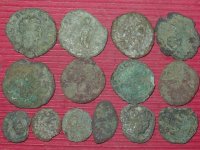 9.JPG132.6 KB · Views: 55
9.JPG132.6 KB · Views: 55 -
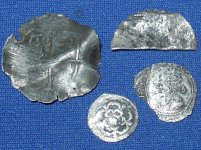 10.JPG156.9 KB · Views: 60
10.JPG156.9 KB · Views: 60 -
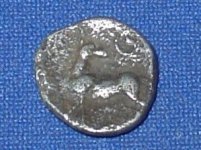 12.JPG52.9 KB · Views: 360
12.JPG52.9 KB · Views: 360 -
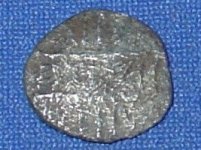 11.JPG49 KB · Views: 351
11.JPG49 KB · Views: 351
Last edited:
Upvote
48







